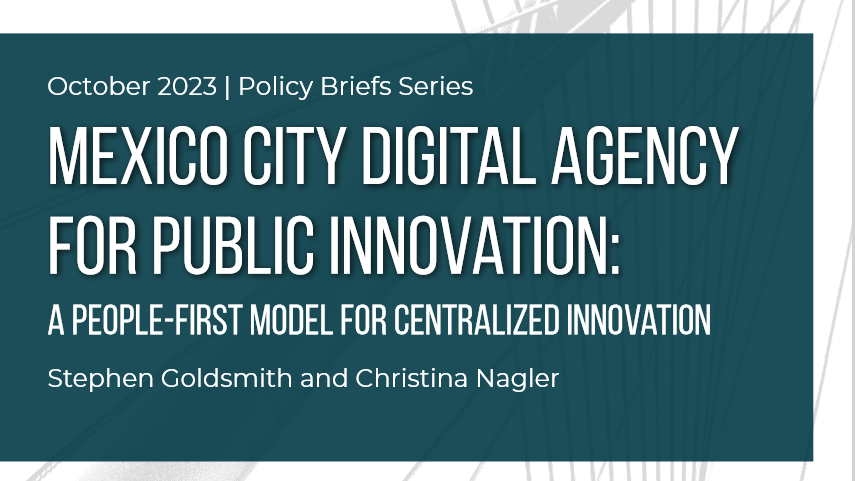- November 28, 2016
- Civic Engagement
In 2015, crime in New York City fell once again, reaching its lowest level in recent decades. New Yorkers are now safer in the city than they have been in years, and yet tensions between police officers and the communities in which they work have continued to mount. The challenge facing the New York Police Department (NYPD) today is to maintain safe streets while ushering in a new era of mutual respect between officers and local communities.
In the last two years, William Bratton has served for a second term as Commissioner of the New York Police Department. In this time, he led the NYPD away from aggressive tactics used to crack down on street-level crime, embracing instead a strategy that balances crime prevention and community engagement. In Bratton’s words, his second term was focused on moving the NYPD from a “warrior” to a “guardian” policing mindset.
This attempt at cultural change involved new policies regarding training and recruiting, neighborhood policing, and, perhaps most visibly, the adoption of social media platforms throughout the NYPD. A recently-published case study, co-authored by Harvard Law School Professor Susan Crawford and me, chronicles these organizational changes, drawing from dozens of interviews conducted by Professor Crawford starting in 2015. The full white paper, published by the Berkman-Klein Center for Internet and Society, is available here.
The paper shows that, upon beginning his second term with the NYPD, Bratton saw the need for a new type of policing focused on fostering communication and mutual respect. New avenues of communication took the form of street-level engagement through the Neighborhood Coordination Officer program and online interaction, first through Twitter and then through two-way communication platforms including Facebook and a crowdsourcing platform called IdeaScale. These technological initiatives relied, in turn, on a general modernization of the agency’s woefully out-of-date technology infrastructure.
Neighborhood Coordination Officers: Changing policing in the streets
The Neighborhood Coordination Officer (NCO) program, which began as a pilot in 2015, gets police officers out of their cars and into the community. The program requires officers spend 20 percent of their time “off radio;” rather than responding to 911 calls, they are expected to move through the neighborhood and engage informally with citizens. On the basis of the program’s success, it has expanded from an original set of five pilot precincts to 44 precincts across the city—over 50 percent of all precincts and all Housing commands.
The first step in forging more meaningful relationships was to assign officers to unified neighborhoods, rather than disparate parts of precincts. Where once cops would be responsible for many small areas scattered throughout the precinct, under NCO, the same cops are consistently patrolling a continuous, recognizable neighborhood, allowing them to become familiar with residents. By redrawing sector boundaries and assigning dedicated neighborhood officers, the program created, for the first time, a true “geographic responsibility” for officers, encouraging them to not only respond to emergencies, but also follow up on minor complaints or concerns expressed by residents.
The NCOs are also expected to engage in formal interaction with their communities through involvement in community groups. NCOs typically attend community meetings and are expected to develop working groups with less publicly-engaged demographics, especially young men. Through these intentional forms of public interaction, officers become familiar with and to their constituents. Whether or not this strategy will result in more effective crime prevention remains to be seen, but the NCO program is not aimed primarily at reducing crime. Rather, it is focused on building trust in communities at a time when it is urgently needed.
Twitter: Embracing social media, relaxing “command-and-control” culture
While the NCOs focused on increasing face-to-face communication, Commissioner Bratton was also embracing Twitter as a tool for engaging with New Yorkers online. Starting in early 2014 with the Commissioner’s personal account and five precinct pilot command accounts, the NYPD Twitter program has grown to over 100 separate accounts, including all city precincts, housing commands, and many department heads. By enabling open interaction between officers and the public, Bratton took a radical step away from the “command-and-control” culture that had dominated the NYPD for decades, empowering officers throughout the organization to find their own public voice.
The Twitter program began with Bratton’s first tweet in January of 2014, which many officers view as an important milestone. His first tweet was, as one commander remarked, “very important, very unique to this department that you see something that’s not a press release coming out of the NYPD, that’s a personal voice and has a photo attached… you can relate.” Despite the initial novelty of this direct, personal communication, the program quickly expanded, and more than one hundred NYPD chiefs and officers were tweeting by the end of the year. One officer put it succinctly when he said, referring to the previous police chief, “Commissioner Kelly was a great man, but he spoke, and now all of the sudden all are speaking.”
While some officers embraced the new opportunity with enthusiasm, others were wary of engaging in open conversation on such an unmediated platform. As one officer explained, “I said, ‘I don’t want to tweet.’ First of all, I’m not on Facebook because I feel like a public figure. I don’t need to be involved. I’m not out there. I don’t want to be out there. This was the last thing I’d want to do.”
They were right to feel apprehensive. Within a few months of going online, the NYPD suffered a minor scandal after launching a hashtag, #myNYPD, that was quickly taken up by activists critical of the department’s treatment of poor and minority residents. While this might have prompted another Commissioner to shut down the Twitter program altogether, Bratton demonstrated his commitment to the new openness. As one officer explained, the tone set by Bratton was, “‘Look, this happened. No one is getting fired… We’re going to do damage control [and] we’re going to move forward,’ and I think that set an example… [Officers felt that] this ground is maybe a little less dangerous because you know you have the support of 1PP [headquarters].” By weathering the storm, Bratton signaled his support for officers throughout the organization as they experimented with their new public voice.
Building infrastructure for modern policing
When Commissioner Bratton took office, the NYPD’s information technology infrastructure was woefully out of date. Precincts used outdated Internet connections provided by Verizon, which would have been a larger problem if precinct officers had access to the Internet at all: few officers had a desktop computer and fewer still had computers with any kind of connectivity. Most officers had no phone number or voicemail.
In two busy years, the NYPD has replaced its data centers, started construction on a redundant citywide fiber optic network, invested in smartphones for all officers and in-vehicle tablets, and set up email, phone numbers, and voicemail for most officers in the street.
Perhaps the most exciting technology initiative, and the one most closely linked to the implementation of social media, is the department-wide rollout of smartphones. Using $140 million awarded to the NYPD by the Manhattan District Attorney from a settlement with international banks, the department invested in 41,000 mobile devices, including 35,000 smartphones and 6,000 tablet computers installed in police vehicles. Initially, the department planned a two-year rollout, but after piloting smartphones in four precincts, they saw the massive benefit of the equipment and accelerated deployment.
Limitations and opportunities
Building a local audience: Although the NYPD has quickly built a local following, the department’s reach is not large. By the end of 2015, the 111 NYPD Twitter accounts collectively had almost 750,000 followers, but in a city of eight million, such a following is still too limited. As one officer explained, “We still struggle with the general public awareness of the fact that they can tune into us online.” Cultivating a local audience is particularly important. Many non-local Twitter users—especially journalists—follow NYPD accounts, but the department gets the most benefit by engaging with local residents. Building broad interest among community members has proven difficult, as some are not on social media and others may not see the benefit of following NYPD accounts. However, the department’s bureaus are working to expand awareness in the streets through flyers and face-to-face communication.
Two-Way Communication: The greatest potential of social media is its ability to facilitate two-way communication. Organizations like the NYPD have always had the ability to broadcast through press releases or public service announcements. Unlike these old media, Twitter allows the NYPD to listen, as well as to speak. To date, however, the department makes limited use of this capability. Listening is critical, not only because it can provide the NYPD with valuable information, but also because communication is a two-way street—people are more likely to listen if they can also be heard. Early efforts at online “listening” through a platform called IdeaScale gained limited traction, prompting the NYPD to explore supplementing the program with platforms residents already use, such as Facebook. As NYPD expands its use of social media, it will benefit from learning how to harness the ability to hear from its communities online.
Measurement: The recent initiatives implemented by the NYPD all point to a desire to improve the responsiveness and community engagement of the department. However, the city has established few metrics or benchmarks to track the success of the initiatives, creating a barrier to meaningful change. The NYPD will only know how close it is to reaching its goals if data is regularly collected, analyzed, and measured against targets established in advance. The administrators of these programs know that this is a shortcoming of both the technology and the organizational initiatives, and steps are being taken to establish measures and targets. However, nothing can beat knowing your data, establishing a baseline, and tracking progress from the outset.
Top photo credit Flickr/Adrian Owen





